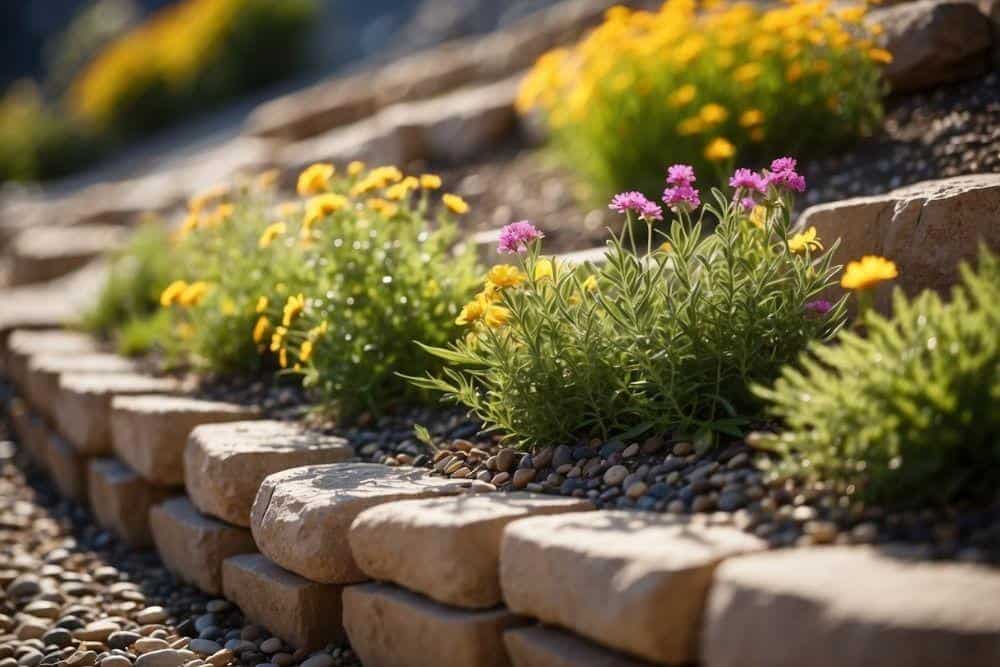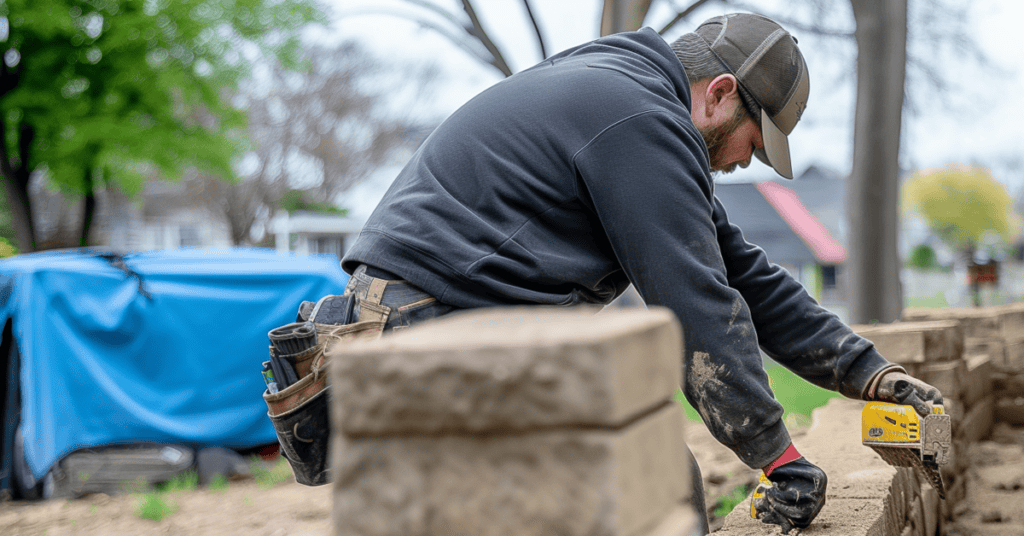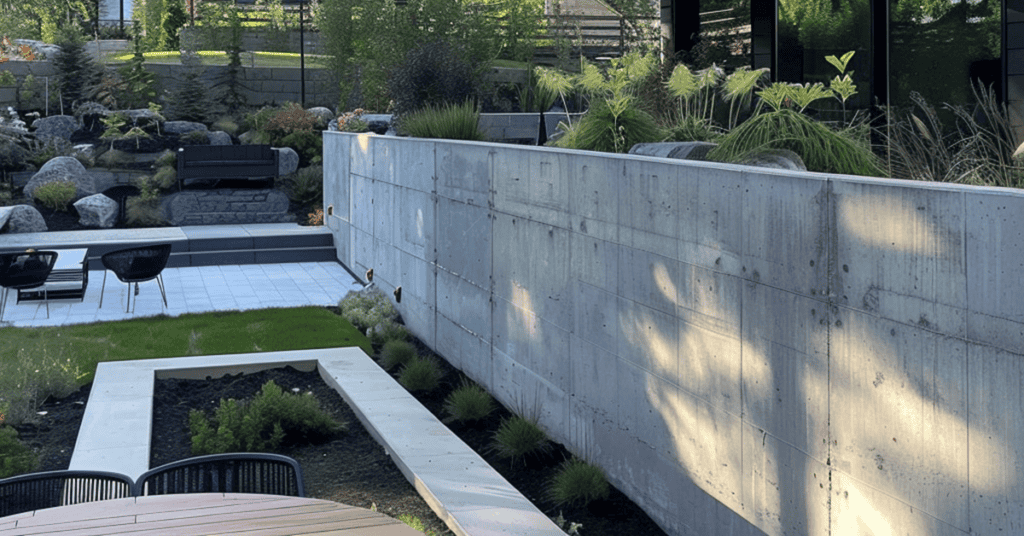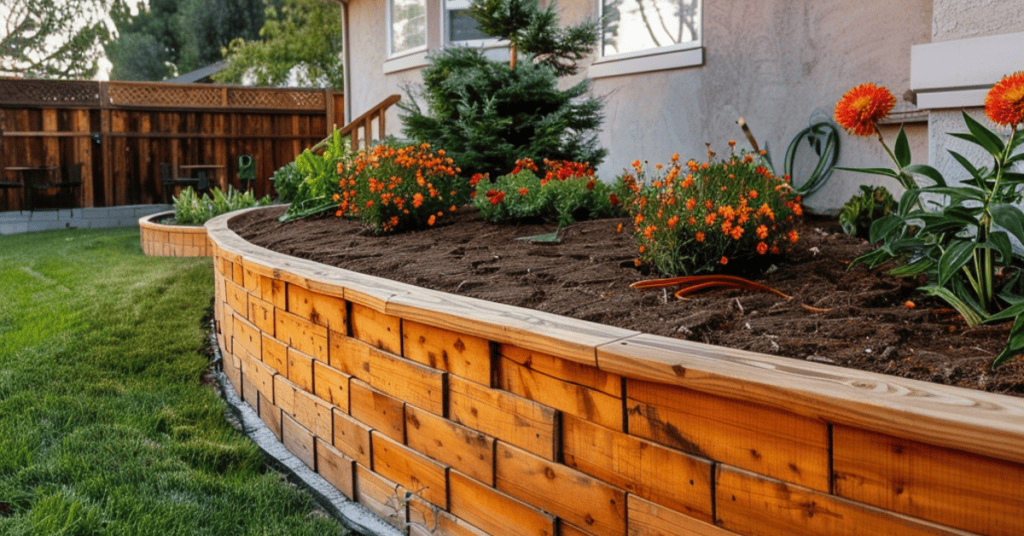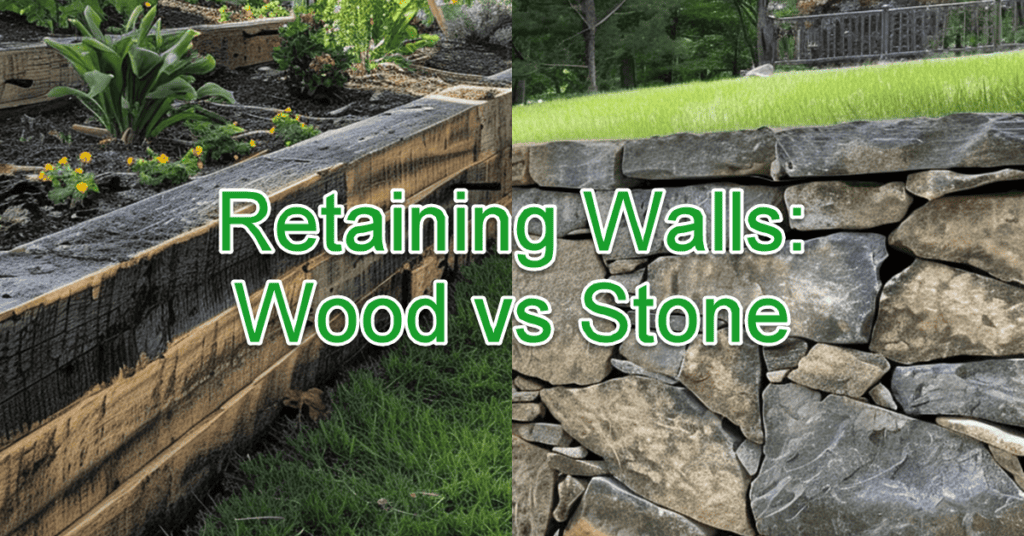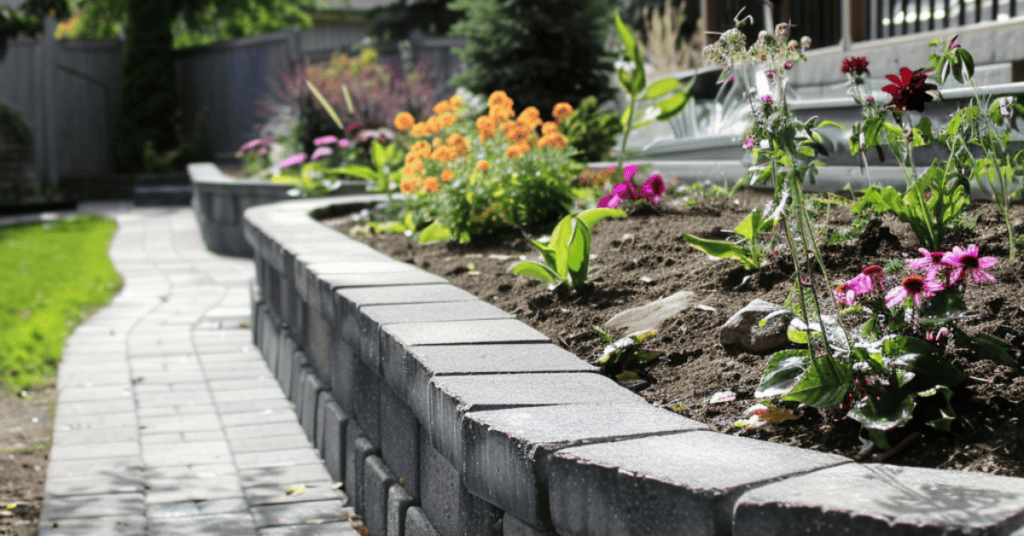Selection of Native Colorado Plants
Choosing the right native plants for retaining walls involves selecting species that support biodiversity and provide sustainability. These plants thrive in Colorado’s unique climate and offer numerous benefits for landscaping.
Advantages of Native Flora
Native plants are adapted to Colorado’s climate and soil conditions, making them a reliable choice for landscaping. They require less water and fertilizer, reducing maintenance time and costs. Because of their resilience, native plants are more resistant to local pests and diseases, making them a durable choice for retaining walls.
Examples of native shrubs like the Stansbury Cliffrose provide aesthetic value with their creamy colored flowers and feather-tailed seeds. Plants such as these not only enhance beauty but also reduce soil erosion and protect water quality.
Ensuring Biodiversity and Sustainability
Using native plants promotes biodiversity by providing habitats for local wildlife. The Colorado Native Plant Society refers to these native plant communities as being able to support pollinators like bees and butterflies. For example, establishing a garden with Rocky Mountain Columbine or Wild Rose creates a sanctuary for various insects and animals.
Native flora also ensure long-term sustainability. Because these plants are accustomed to Colorado’s drought and rainfall patterns, they are more sustainable in the long run. This kind of landscaping reduces the need for sprinklers, and what water is needed can be doled out in the right amounts through drip irrigation.
Top Native Perennials for Retaining Walls
The Best Perennials for Colorado
Plant Profiles and Characteristics
Yarrow (Achillea millefolium): Yarrow is a hardy perennial known for its clusters of tiny, flat-topped flowers in shades of white, yellow, pink, or red. It blooms from late spring to early fall and thrives in full sun and well-drained soil. Yarrow is a drought tolerant plant and easy to care for, making it perfect for Colorado gardens. When planted along retaining walls, its dense foliage helps control erosion.
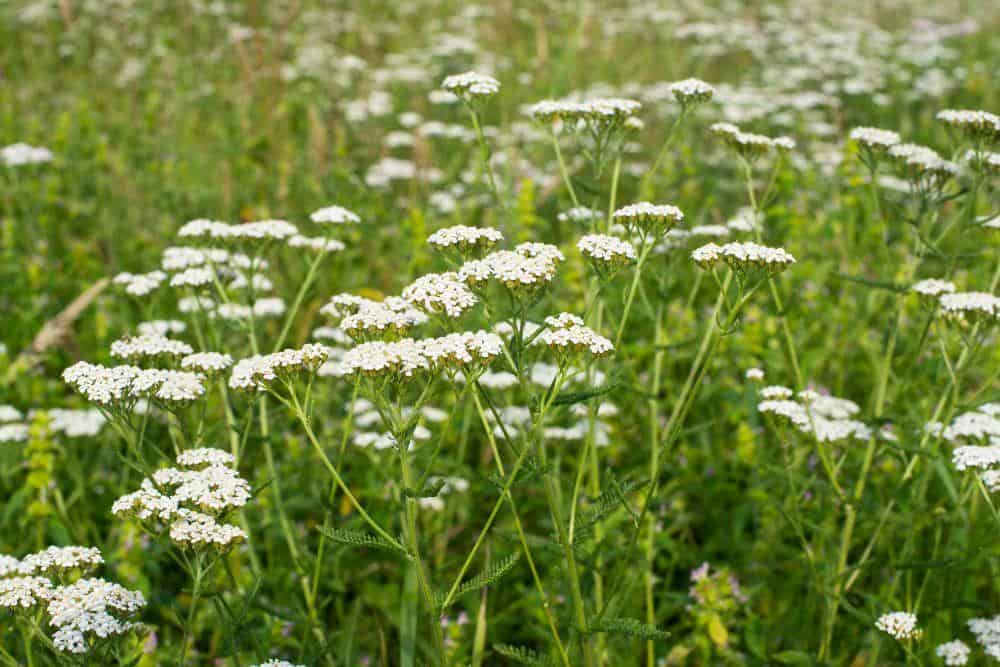
Yarrow Flowers Can Bloom in a Variety of Colors – Including White
Creeping Mahonia (Mahonia repens): This low-growing evergreen shrub features bright yellow flowers in the spring, followed by blue-black berries. Creeping Mahonia thrives in partial to full shade and is highly drought-tolerant. Its glossy, holly-like leaves provide year-round interest and work well as a groundcover on retaining walls, preventing soil erosion and adding texture to the landscape.
Prairie Smoke (Geum triflorum): Prairie Smoke features unique, feathery seed heads and pink to purplish blooms in early summer. This perennial grows best in full sun and dry, well-drained soil. It is ideal for retaining walls due to its deep roots, which help stabilize soil. Prairie Smoke’s distinctive appearance adds visual interest to any garden.
Rocky Mountain Columbine (Aquilegia caerulea): With its delicate blue and white flowers, the Rocky Mountain Columbine is Colorado’s state flower. It thrives in partial shade and well-drained soil. This perennial is perfect for retaining walls, where it can receive adequate drainage and light. Its deep roots help prevent erosion, while its stunning blooms attract pollinators like bees and butterflies.
Shrubs and Bushes for Structural Integrity
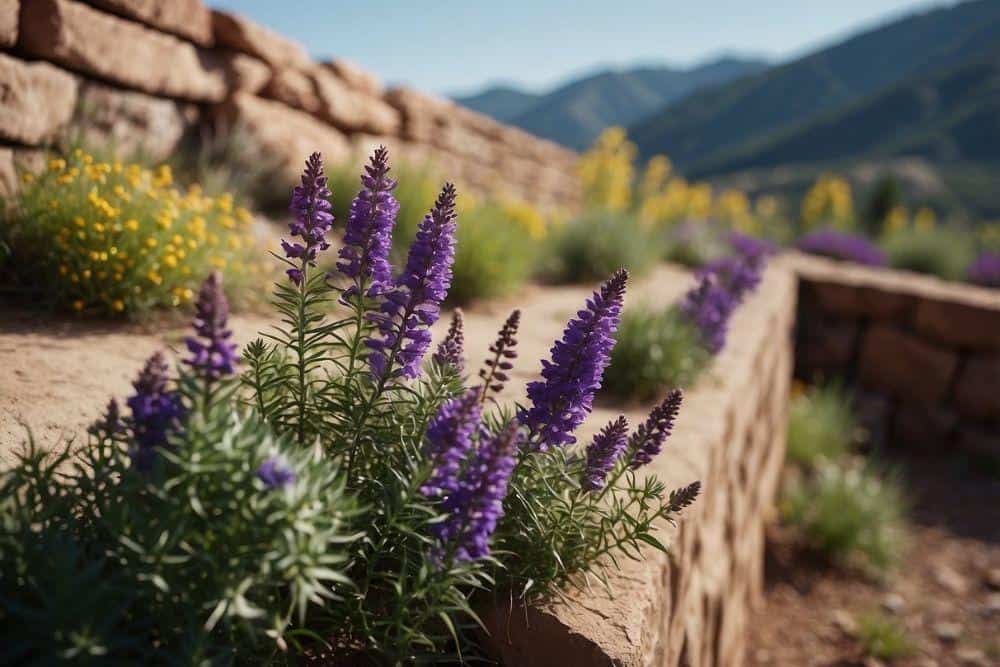
Flowering Plants Add a Wonderful Aesthetic Touch to the Top of Retaining Walls
Shrubs can greatly enhance the structural integrity of retaining walls. They offer aesthetic value while their root systems help stabilize soil and prevent erosion.
Best Choices for Retaining Walls
Mountain Mahogany
Mountain Mahogany is an excellent choice for retaining walls in Colorado. This native shrub has a deep, fibrous root system that helps anchor soil on slopes. Its ability to survive in dry conditions makes it particularly suited for areas with limited water.
Sumac
Sumac is another strong candidate. Known for its comprehensive root system, Sumac thrives in various soil types and conditions. Its roots work effectively to hold soil and reduce erosion, making it ideal for structural stability.
Lilac Bushes
Lilac bushes are suitable for any landscape condition. Their robust root system helps in holding soil tightly, while they thrive in both wet and dry soil conditions. Lilacs can also survive in poor soil, making them versatile and reliable.
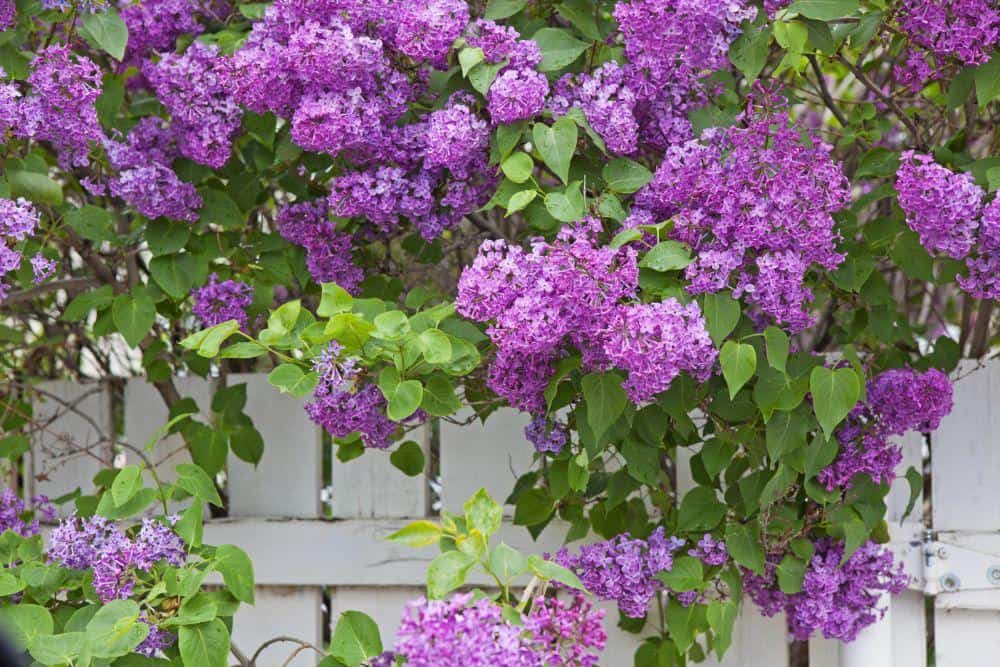
Lilac Bushes with their Distinct Soft Shade of Purple Look Amazing in Your Garden and on Retaining Walls
Smoke Bush
The Smoke Bush is notable for its extensive roots and hardiness. This shrub can grow up to twenty feet tall, offering both stabilization and height. It is a resilient choice for creating a visually appealing and structurally sound retaining wall.
Incorporating Evergreens and Year-Round Color
Colorado Native Trees
Evergreen Varieties
Evergreens are perfect for maintaining a consistent appearance year-round. For example, the Colorado Blue Spruce is a popular choice, known for its striking blue-green needles. This tree not only provides year-round color but also adds a classic touch to any landscape. Another excellent choice is the Pinyon Pine, which is well-suited to Colorado’s climate and offers dense foliage that can enhance privacy.
Smaller evergreens like Manzanita are ideal for retaining walls. This shrub has glossy leaves and red bark, creating a distinct look even during the winter months. Each of these evergreens requires minimal maintenance, making them perfect for both novice and experienced gardeners.
Plants Offering Seasonal Hues
In addition to evergreens, integrating plants that change color with the seasons keeps your retaining wall dynamic and engaging. Sumac bushes are known for their vibrant red foliage in the fall and are easy to care for. The Smoke Bush offers a striking mix of “smoky” pink or yellowish flowers in summer and rich, colorful leaves in autumn.
Oakleaf Hydrangea provides large, beautiful flower clusters in spring and summer, followed by deep red and purple leaves in the fall. This shrub offers a continuous color display, ensuring your garden remains lively throughout the year. Combining these seasonal plants with evergreens ensures that your retaining walls are never dull, always offering something new to admire.
Selecting Ground Covers for Landscaping
Choosing the right ground cover is essential for creating a stable, attractive landscape, especially in Colorado’s unique climate. It’s important to select varieties that can handle local soil conditions and weather patterns.
Types Suited for Colorado Climate
Lamium (Dead Nettle) Lamium is well-suited for Colorado due to its tolerance of various soil types and light conditions. It thrives in partial shade, making it perfect for areas with afternoon sun. The plant has attractive foliage, often with silvery patterns, and pink or white blooms that add color to gardens.
Golden Creeping Jenny (Lysimachia nummularia) Golden Creeping Jenny is a great option for those looking for ground covers that spread easily. It prefers moist, well-drained soil and can handle full sun to part shade. This plant is particularly useful for retaining walls due to its trailing nature, which helps stabilize soil.
Penstemon radicosus This native plant, known as the Mat Penstemon, is perfect for the dry, rocky soils common in Colorado. It thrives in full sun and requires minimal water, making it a low-maintenance option. Its purple flowers and slender stems offer a beautiful and practical choice for ground cover.
These options provide both aesthetic appeal and functional benefits, such as erosion control and weed suppression. Select according to your specific site conditions to ensure a flourishing landscape.
Ornamental Grass

Ornamental Grasses like blue grama are also a Great Pick to Put on Top of a Retaining Wall
Ornamental grass adds both texture and aesthetic appeal to retaining walls. They thrive in Colorado’s climate and provide year-round interest.
Varieties that Complement Retaining Walls
Blue Grama is a native grass ideal for retaining walls. It reaches about 2 feet in height and has delicate flowers that dance in the wind. It is one of the drought resistant plants that is a perfect fit for Colorado landscapes.
Little Bluestem is another excellent option. It has blue-green foliage that turns red-orange in the fall. This grass grows to about 2-3 feet and adds vibrant color.
Feather Reed Grass is known for its tall, graceful plumes. It can grow up to 5 feet and remains attractive through winter. This grass is easy to care for and thrives in various conditions, making it highly adaptable.
Attracting Pollinators and Supporting Wildlife
Pollinators and hummingbirds are likely to visit your backyard if you have the proper plant selection
Using Colorado native plants for retaining walls as part of your landscape design strategy can not only add beauty but also support local wildlife by attracting pollinators. These plants provide food and shelter, creating a thriving ecosystem.
Selection of Flora for Pollinators
Bees and Butterflies: Incorporating plants like Woods Rose and Rabbitbrush into retaining walls can attract bees and butterflies. These native shrubs offer nectar and pollen, essential for pollinator diets. Woods Rose is also known for its rose hips, rich in vitamins, which attract other wildlife.
Birds and Hummingbirds: Boulder Raspberry is an excellent choice for supporting bird populations. Its bright flowers offer nectar for hummingbirds, while the fruits are a food source for many bird species. Planting this shrub helps create a diverse garden.
Seasonal Blooms: Choose a variety of plants that bloom at different times of the year to provide a steady food source. Early bloomers like Penstemon and late bloomers like Goldenrod ensure continuous support for pollinators.
For more detailed plant recommendations, you can check out this guide from Colorado State University – Wild About Natives: Native Plants for Colorado Pollinators.
Plants with Special Features
Selecting plants with unique features can enhance the aesthetic appeal of retaining walls. Fragrant and aromatic plants can add a sensory dimension, while cascading and trailing plants create a lush visual effect.
Fragrant and Aromatic Options
Fragrant plants bring a delightful dimension to gardens. Lavender is an excellent choice with its beautiful blooms and soothing scent. It thrives in well-drained soil and sunny locations. Another great option is Sage, which not only offers aromatic leaves but also requires minimal maintenance once established.
Bee Balm is perfect for those wanting to attract pollinators like bees and butterflies. Its vibrant flowers release a lovely scent. Thyme is another aromatic herb that works well in retaining walls, producing small, fragrant leaves that are also useful in cooking.
Consider Hyssop for its bright flowers and licorice-like scent. This plant is durable and can handle sunny areas well. Utilizing these plants can make outdoor spaces inviting and pleasant to the senses.
Cascading and Trailing Plants
Cascading and trailing plants add a lush, flowing look to retaining walls. Silver Falls (Dichondra argentea) offers beautiful silvery foliage that drapes elegantly over edges, adding a striking visual effect. This plant is drought-tolerant and perfect for sunny spots.
Lobelia provides a cascade of blue, white, or purple flowers, creating vibrant splashes of color. It is ideal for adding beauty to hanging baskets and retaining walls alike. Wave Petunia can cover large areas quickly with its trailing growth habit and bright, showy flowers.
Morning Glory is known for its fast growth and heart-shaped leaves. Its trumpet-shaped flowers add a pop of color to any space. These cascading and trailing plants can transform retaining walls into eye-catching garden features.
Plants for Specific Growing Conditions
Native plants in Colorado are well-adapted to the state’s variable weather and soil types. Understanding the best plants for sunny, shady, dry, and sandy areas ensures a thriving garden.
Options for Sunny and Shady Areas
In sunny areas, plants like Lanceleaf Coreopsis are ideal. They produce vibrant yellow blooms and thrive with six or more hours of direct sunlight daily. Another great choice is the Blanket Flower, which displays bright red and yellow petals and is exceptionally drought-tolerant.
For shaded areas, the Golden Columbine stands out. This plant has delicate yellow or white flowers and grows well in areas that receive less than four hours of direct sunlight. The Canada Violet is another excellent choice, providing lovely white flowers that add brightness to darker spaces.
Plants for Dry or Sandy Soil
Blue Grama Grass is perfect for dry soil. It’s a hardy grass that requires minimal water and thrives in sandy conditions. This plant is ideal for retaining walls, providing good coverage while stabilizing the soil.
For sandy soil, the Sand Sagebrush is highly recommended. It has silver-gray foliage and tiny white flowers, making it both attractive and practical. Another option is Mountain Mahogany, which does well in dry, sandy conditions and produces small, fragrant flowers.
Using these specific plant choices for sunny, shady, dry, and sandy conditions can ensure a vibrant and sustainable garden in Colorado.


